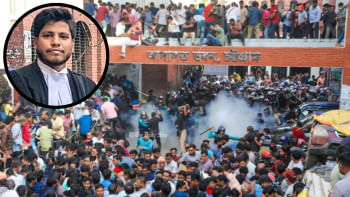Potential of Old Dhaka as a tourist destination

History and culture are what make a city come alive and our beloved Dhaka has all these attributes.
Tourism develops on the five vital components which are attraction, accessibility, accommodation, amenities, and activities. Dhaka has a rich historical past which serves as a major attraction, traffic congestion might cause some accessibility issues but accommodation and amenities are plenty. The metropolis is now a city of activities, plays, exhibitions, concerts, and museums with a plethora of dining options offering global cuisines.

Then why Dhaka -- Old Dhaka in particular -- is still not a popular tourist destination?
Taimur Islam is the CEO and Chairman, Urban Study Group (USG). For almost two decades USG has been working as a non-profit organisation, campaigning for the conservation of the architectural heritage of Old Dhaka.
He feels, "Tourism in Dhaka should not be confined to a few iconic buildings in the old town and handful of monuments under the tourism department. It should be the mandate of the city corporation to clean and restore the past with the help of the archaeological department."
There is an unknown pull, a unique charm that brings you to Old Dhaka. There are popular guided tours; tour operators and USG volunteers show you the things in and around Old Dhaka. But is it enough to draw the attention of local and foreign tourists on a large scale?
Taimur points out a few hard facts. "We failed to appreciate the huge bank of treasures from the Buriganga to Ramna that has 400 years of history."
The city flourished as an urban space a few centuries ago and the old neighbourhoods are marked with historical sites. From the likes of Shankhari Bazaar, which is one of the oldest areas in Dhaka, they stretch along narrow lanes lined with richly decorated brick buildings and temples built during the late Mughal or Colonial period. Sutrapur's grandeur with Hrishikesh Das Road's English-styled old heritage buildings can add historical nostalgia to old-town tourism.
"The rivers around Dhaka are an asset that can be turned into tourist destinations. For example, the Buckland Dam is a significant architectural feat located on the banks of the Buriganga. In the 19th century (and early part of the 20th century) this was a popular tourist destination of the city. Now the entire area is in a mess," Taimur adds.

"Take Ruplal House, a 19th-century mansion in Farashganj area, for example. This grand structure is now occupied by local spice and vegetable merchants and a colony of unauthorised squatters. With proper intervention, we could save the structure and also have spice souks around for visitors. We should keep the new and reclaim and restore the old. It is an issue of urban planning and parallelly disaster management," he opines.
"We are killing Old Dhaka because we cannot appreciate it."
"The old town is a 24 square kilometres place that should be declared as a heritage zone. We are losing the battle against time and unless we find a way to stop the destruction of heritage property, Dhaka's historic environment will be lost," Taimur concluded.


 For all latest news, follow The Daily Star's Google News channel.
For all latest news, follow The Daily Star's Google News channel. 



Comments